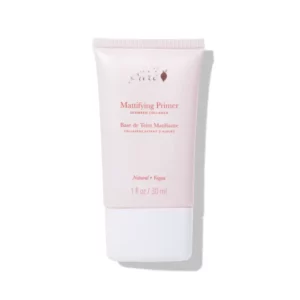Expert Tips and Tricks

Large pores can be a common concern for many individuals. While it’s entirely normal to have pores on your skin, enlarged pores can sometimes be more visible or prominent, affecting the appearance of your complexion. That’s where the right makeup primer comes into play. A well-chosen primer can help minimize the appearance of large pores and create a smoother canvas for your makeup. In this beauty blog, we’ll dive deep into the expert tips and tricks for selecting the perfect primer to tackle those pesky large pores.
Before we explore the world of primers, it’s essential to understand why large pores can be an issue. Pores are tiny openings on your skin’s surface that release sebum (natural oil) to keep your skin moisturized and healthy. Genetics, skin type, age, and other factors can influence the size and visibility of your pores.
Large pores typically occur due to excess sebum production, which can stretch the surrounding skin and cause pores to appear larger than usual. These enlarged pores are most commonly found on the nose, cheeks, and forehead. Large pores can also be more noticeable if they are clogged with debris, makeup, or dead skin cells.
The Role of Makeup Primer
A makeup primer serves as a bridge between skincare and makeup application. It prepares your skin for makeup by creating a smooth, even surface. For those with large pores, the right primer can make a significant difference. Here’s how a primer can help:
- Pore Minimization: Primers often contain ingredients like silicones, which fill in and blur the appearance of large pores. This creates a smoother canvas for makeup application.
- Mattifying: Many primers help control excess oil, preventing pores from becoming more noticeable due to shine or greasiness.
- Longer-Lasting Makeup: Primers can improve the longevity of your makeup by creating a barrier that keeps makeup in place, even in areas with enlarged pores.
Tips for Choosing the Right Primer
Selecting the perfect primer for your large pores requires some consideration. Here are expert tips and tricks to help you make the best choice:
1. Silicone-Based Primers
Silicone-based primers are often the go-to choice for individuals with large pores. They create a silky, smooth surface that effectively conceals pores and imperfections. Look for primers with ingredients like dimethicone or cyclopentasiloxane, which are known for their pore-blurring properties.
2. Matte Primers
If you have oily skin in addition to large pores, a matte primer can be your best friend. These primers help control excess oil, reducing shine and the visibility of pores. Look for keywords like “matte” or “oil-free” on the product label.
3. Pore-Filling Primers
Some primers are specifically designed to target large pores. These may be labeled as “pore-filling” or “pore-minimizing” primers. They often contain additional ingredients like salicylic acid to help unclog pores over time.
4. Non-Comedogenic
Make sure the primer you choose is non-comedogenic, meaning it won’t clog your pores further. This is especially important if you have acne-prone skin in addition to large pores.
5. SPF Protection
If your primer includes SPF, it provides an extra layer of sun protection while reducing the appearance of large pores. Sunscreen helps prevent collagen breakdown, which can lead to increased pore size.
6. Color-Correcting Primers
For individuals with redness or uneven skin tone in addition to large pores, consider color-correcting primers. These come in different shades (like green for redness or peach for dark circles) and can help balance your skin tone, reducing the need for heavy makeup application.
7. Patch Test
Before applying a new primer all over your face, do a patch test to ensure you don’t have any adverse reactions. Apply a small amount to a small section of your skin, ideally on your jawline, and observe for any redness, irritation, or breakouts.

Application Tips
Once you’ve chosen the right primer, how you apply it matters too. Here are some tips for the best application:
- Start with clean, moisturized skin.
- Apply a pea-sized amount of primer to your fingertips.
- Gently pat and press the primer into areas with large pores, rather than rubbing or dragging it.
- Let the primer settle on your skin for a minute before applying your foundation or makeup.
Expert Tricks
Finally, here are a few expert tricks to maximize your primer’s pore-minimizing effects:
- Layering: Apply a thin layer of primer and let it set for a minute. Then, apply another layer specifically to the areas with larger pores for extra smoothing.
- Foundation Brush: Use a foundation brush or makeup sponge to press the primer into your skin and further blend it.
- Setting Spray: Finish your makeup routine with a setting spray to lock everything in place, including your primer, for a long-lasting, pore-minimizing effect.
The right makeup primer can be a game-changer for those dealing with large pores. It creates a smoother canvas, minimizes the appearance of pores, and helps your makeup last longer. With the expert tips and tricks mentioned in this blog, you can confidently choose the perfect primer to enhance your skin’s texture and your overall makeup look. Say goodbye to the woes of large pores and hello to a flawless, poreless finish.

